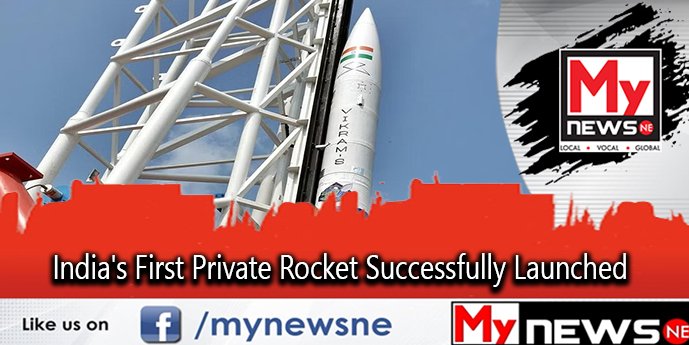‘Vikram-S’, India’s First Private Rocket Successfully Launched
Guwahati: India’s first-ever privately developed rocket Vikram-S successfully launched from the Sriharikota spaceport on Friday morning.
The Vikram Suborbital rocket was launched from Sriharikota’s Satish Dhawan Space Center at 11:30 am.
“Mission Prarambh is successfully accomplished. Congratulations” tweeted the Indian Space Research Organisation ISRO and tagged @SkyrootA Congratulations India! @INSPACeIND.
With assistance from ISRO and IN-SPACe, the Hyderabad-based startup Skyroot Aerospace has designed the “Prarambh” mission and the Vikram-S rocket (Indian National Space Promotion and Authorisation Centre). The rocket is sending two Indian and one foreign customer’s cargo into space.
“89.5 Kms peak altitude achieved. Vikram-S rocket meets all flight parameters. It’s history in the making for India. Keep watching,” Skyroot Aerospace tweeted attaching a YouTube link of the flight.
Union Minister Jitendra Singh, on Friday, arrived at Sriharikota for the grand launch of ‘Vikram S’.
Taking to Twitter, Jitendra Singh shared a picture with the team members of Skyroot Aerospace which he captioned, “With #StartUp Team “Skyroot Aerospace” at #Sriharikota, minutes before the launch of the first ever private Rocket, Vikram-S, named after Vikram Sarabhai, the founding father of India’s Space program. Countdown begins!.”
The name “Vikram-S” honours Vikram Sarabhai who started India’s space programme.
Skyroot Aerospace in Hyderabad has built the “Prarambh” mission and the Vikram-S rocket with assistance from ISRO and IN-SPACe (Indian National Space Promotion and Authorisation Centre). The rocket is sending two Indian and one foreign customer’s cargo into space.
According to Skyroot Aerospace, Vikram-S, which is powered by solid fueled propulsion, cutting edge avionics and an all-carbon fibre core construction has been built within a record time of two years with the foundation starting around late 2020.
According to Skyroot Aerospace, the Vikram-S will aid in testing and validating the majority of the technological components found in the Vikram series of orbital class space launch vehicles, including numerous sub-systems and components that will be tested during the pre-lift off and post-lift off phases of the launch.
One of the first all-composite space launch vehicles, Vikram S is built with solid thrusters that were 3D printed for spin stability.
According to Skyroot Aerospace, the Vikram-S is the quickest and most cheapest way to travel to space, with a body mass of 545 kg, a length of 6 metres and a diameter of 0.375 metres.

